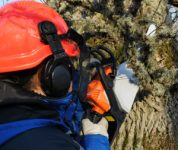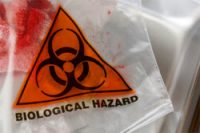Category: Special Topics in Safety Management
Safety is a process, and as such, needs to be managed. This section offers resources to create a viable safety program, sell it to senior management, train supervisors and employees in using it, and then track and report your progress. Look also for ways to advance your own skills in these areas, both for your current job, and those that follow.
When we think about workplace violence, thoughts turn to shootings and other person-to-person violence. But suicide is also a serious risk. Keep reading for important information about the signs that an employee may be considering taking his or her own life and to find out which industry’s workers are especially at risk.
The experts say employee engagement is the (not so) secret element in a successful safety program. So how about some fresh new ideas for making it happen? We’ve got them here.
Recently, a subscriber asked the following question: Is there an OSHA requirement that if lighting and power requirements cannot be met by the use of battery lights, reduced voltage lighting at a maximum of 12 volts must be used?
The Michigan Occupational Safety and Health Administration (MIOSHA) is asking tree trimming businesses to be on high alert for unsafe work practices that can lead to injury or death.
A manufacturing firm has used Ohio Bureau of Workers’ Compensation grant money to purchase a costly new tool intended to protect employees from injury. Find out why this employer was especially in need of an ergonomic assist.
November is National Healthy Skin Month, so it’s a great time to teach your employees how to protect their body’s natural armor.
OSHA recently renewed its alliance with the American Staffing Association with the goal of protecting temporary employees from workplace hazards.
One of the most misunderstood portions of the OSHA confined space standard for general industry is the rescue requirement. Many employers don’t manage their confined space entry risks because they fail to adequately assess the hazards and recognize the need for rescue services.
Recently, a subscriber asked the following question: We are in a medical clinic setting and have a question about our eyewash stations. We currently have the bottles with saline flush system. We are wondering if we need to upgrade those to the faucet system. Where do we find these guidelines?
We recently received the following question from a customer: I work in a warehouse. If an employee has an accident and a the trained responder wore latex gloves, patted the blood away with gauze pads, and placed a large bandage on the wound, is this considered biohazardous waste?










